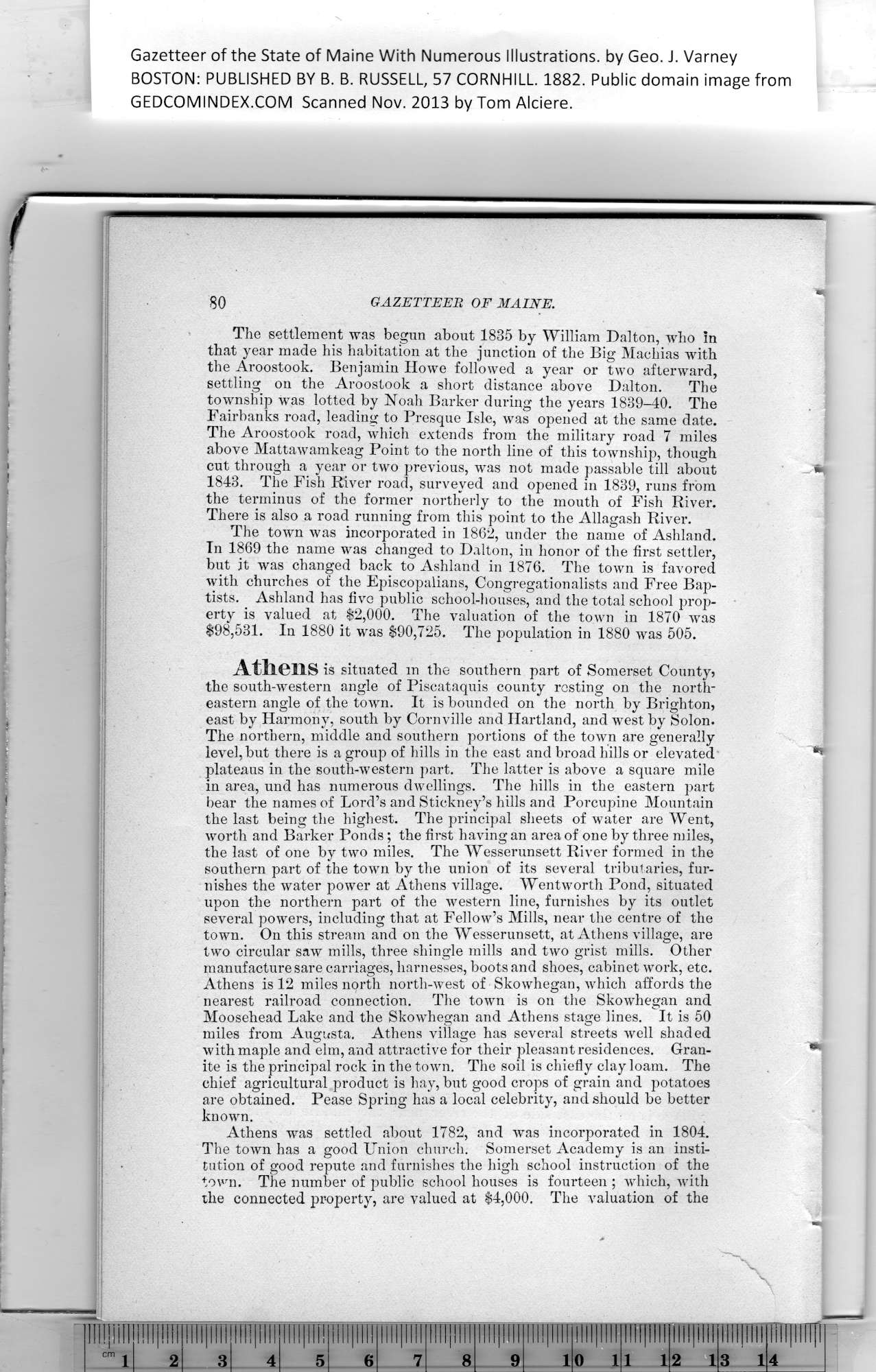Click on the image to view a larger, bitmap (.bmp) image suitable for printing. HOME PAGE ... REFERENCE PAGE ... THIS GAZETTEER’S PAGE |

Click on the image above for a larger, bitmap image suitable for printing.
|
Gazetteer of the State of Maine With Numerous Illustrations, by Geo. J. Varney BOSTON: PUBLISHED BY B. B. RUSSELL, 57 CORNHILL. 1882. Public domain image from 80 GAZETTEER OF MAINE. The settlement was begun about 1835 by William Dalton, who in The Aroostook road, which extends from the military road 7 miles above Mattawamkeag Point to the north line of this township, though cut through a year or two previous, was not made passable till about * 1843. The Fish River road, surveyed and opened in 1839, runs from the terminus of the former northerly to the mouth of Fish River. There is also a road running from this point to the Allagash River. The town was incorporated in 1862, under the name of Ashland. In 1869 the name was changed to Dalton, in honor of the first settler, Athens is situated m the southern part of Somerset County5 The northern, middle and southern portions of the town are generally plateaus in the south-western part. The latter is above a square mile Athens is 12 miles north north-west of Skowhegan, which affords the nearest railroad connection. The town is on the Skowhegan^ and Moosehead Lake and the Skowhegan and Athens stage lines. It is 50 miles from Augusta. Athens village has several streets well shaded with maple and elm, and attractive for their pleasant residences. Gran- * ite is the principal rock in the town. The soil is chiefly clay loam. The chief agricultural product is hay, but good crops of grain and potatoes are obtained. Pease Spring has a local celebrity, and should be better known. Athens was settled about 1782, and was incorporated in 1804. The town has a good Union church. Somerset Academy is an insti- PREVIOUS PAGE ... NEXT PAGE This page was written in HTML using a program written in Python 3.2 |